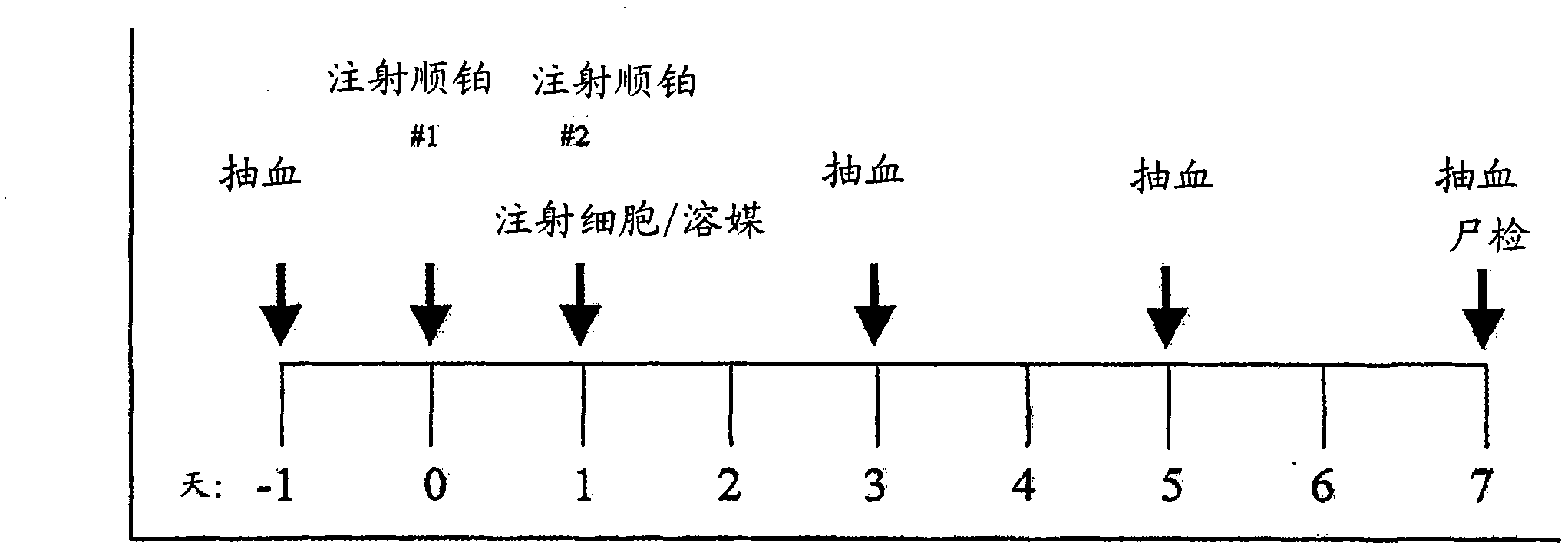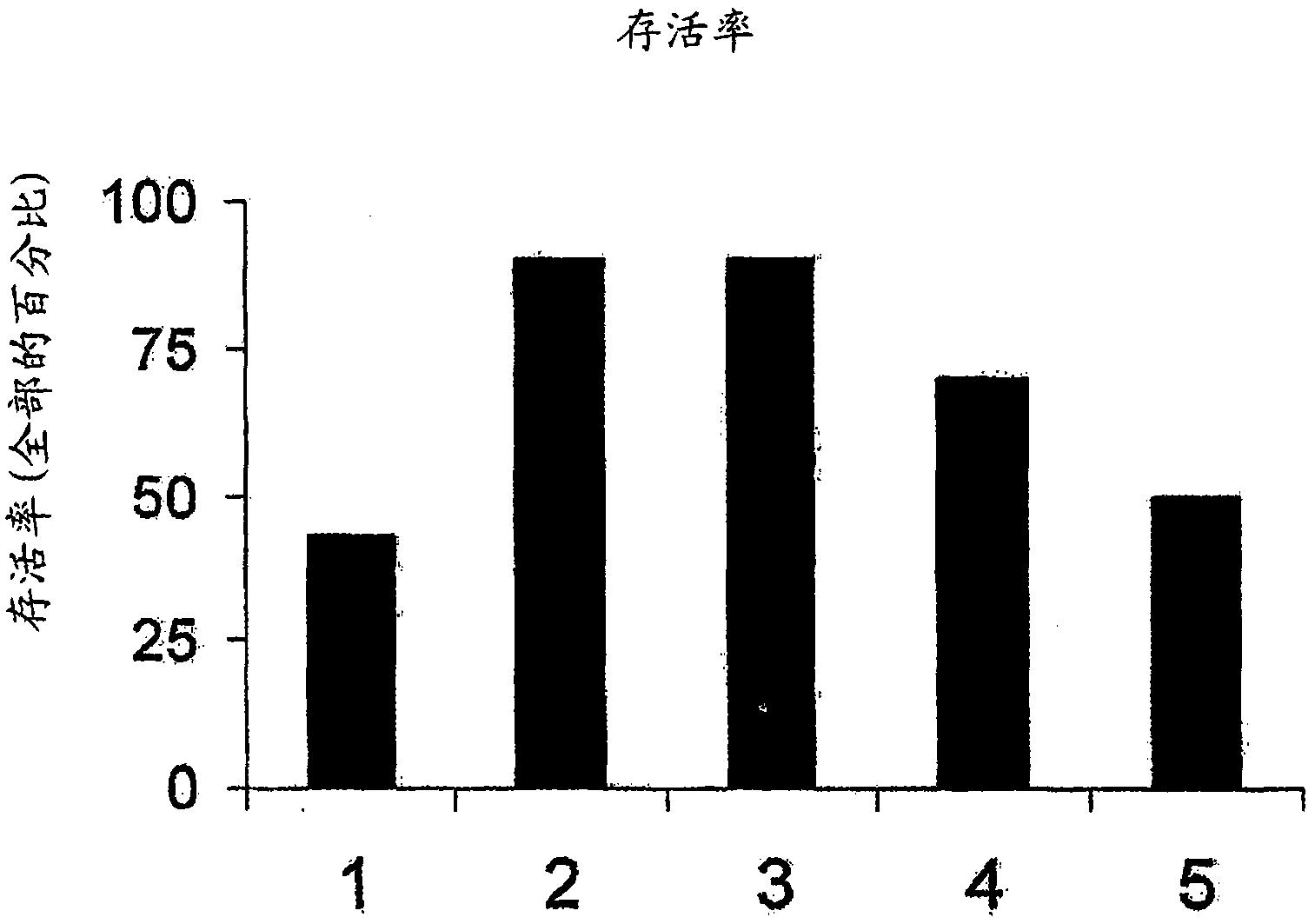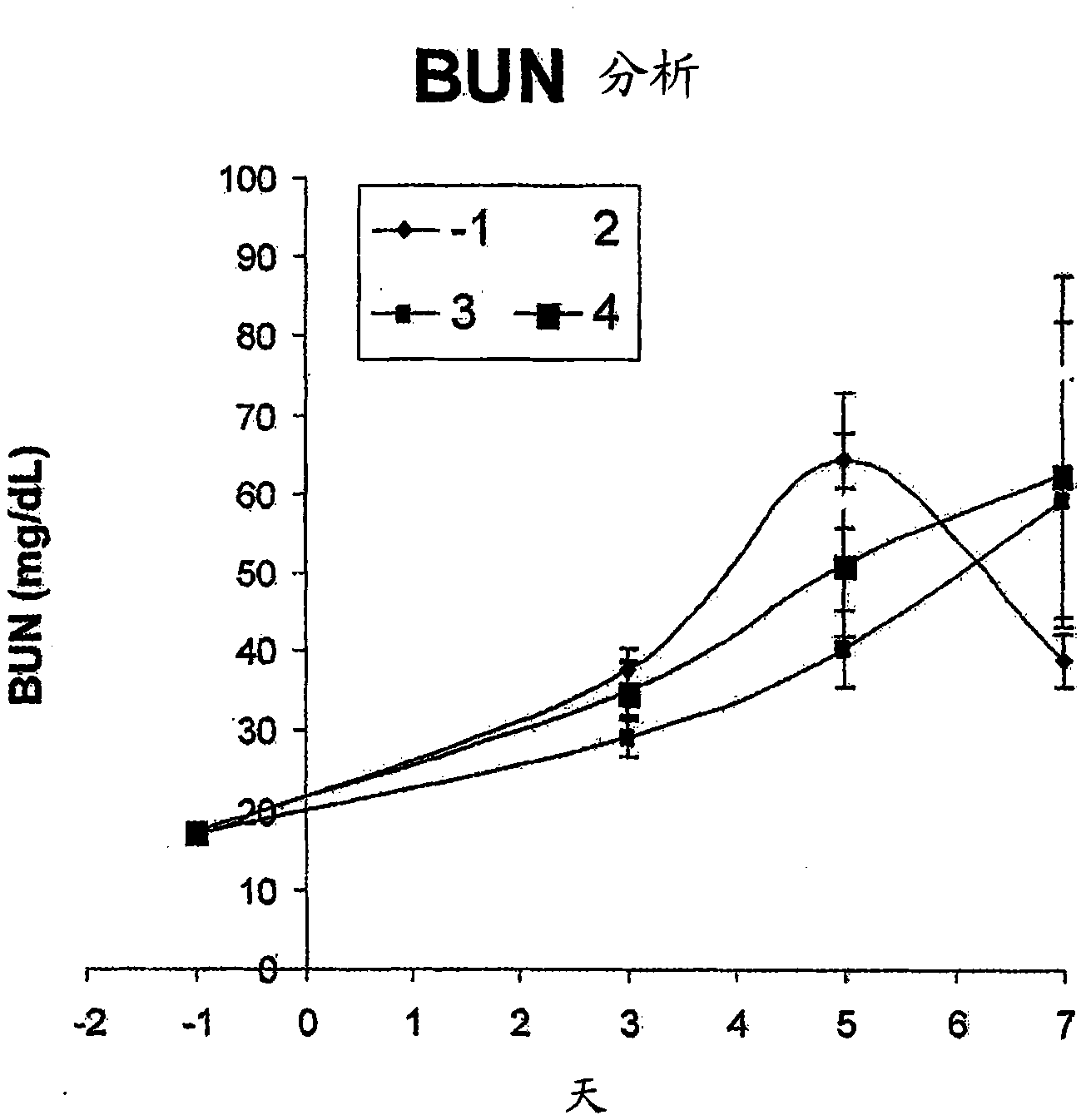Repair and regeneration of renal tissue using human umbilical cord tissue-derived cells
A technology of umbilical cord tissue, human umbilical cord, used in the field of cell-based therapy
- Summary
- Abstract
- Description
- Claims
- Application Information
AI Technical Summary
Problems solved by technology
Method used
Image
Examples
Embodiment 1
[0102] Isolation of Umbilical Cord Tissue-Derived Cells
[0103]Umbilical cords were obtained from National Disease Research Interchange (NDRI, Philadelphia, PA). These tissues were obtained after normal delivery. The cell isolation protocol was performed under sterile conditions in a laminar flow clean bench. To remove blood and debris, the umbilical cord was treated with antifungals and antibiotics (100 units / ml penicillin, 100 μg / ml streptomycin, 0.25 μg / ml amphotericin) in phosphate-buffered saline (PBS; Invitrogen, Carlsbad, CA). Wash in the presence of prime B). These tissues were then placed in a 150cm 2 Mechanical dissociation was performed in tissue culture dishes in the presence of 50 ml medium (DMEM-low glucose or DMEM-high glucose, Invitrogen) until the tissue was finely minced. Transfer the minced tissue to 50 mL conical tubes (approximately 5 grams of tissue per tube). The tissue is then digested in DMEM-low glucose medium or DMEM-high glucose medium, each...
Embodiment 2
[0109] Evaluation of human postpartum-derived cell surface markers by flow cytometry
[0110] Umbilical cord tissue was characterized using flow cytometry to provide a map for identification of cells obtained therefrom.
[0111] Cells were cultured in growth medium (Gibco Carlsbad, CA) containing penicillin / streptomycin. Cells were cultured in plasma-treated T75, T150 and T225 tissue culture flasks (Corning Corning, NY) until confluent. The growth surface of the flask was covered with gelatin by incubating 2% (w / v) gelatin (Sigma, St. Louis, MO) for 20 minutes at room temperature.
[0112] Adherent cells in culture flasks were washed in PBS and detached with trypsin / EDTA. Cells were collected, centrifuged and separated at 1×10 7 The concentration of cells per milliliter was resuspended in 3% (v / v) FBS in PBS. Antibodies to cell surface markers of interest (see below) were added to one hundred microliters of the cell suspension according to the manufacturer's instructions...
Embodiment 3
[0137] Immunohistochemical identification of cellular phenotypes
[0138] Human umbilical cord tissue was collected and immersion fixed in 4% (w / v) paraformaldehyde at 4°C overnight. Immunohistochemistry was performed using antibodies directed against the following epitopes: vimentin (1:500; Sigma, St. Louis, MO), desmin (1:150, raised against rabbit; Sigma; or 1:300, against Increased in mice; Chemicon, Temecula, CA), α-smooth muscle actin (SMA; 1:400; Sigma), cytokeratin 18 (CK18; 1:400; Sigma), von Willebrand factor (vWF; 1: 200; Sigma) and CD34 (human CD34 class III, 1:100, DAKOCytomation, Carpinteria, CA). In addition, the following markers were tested: anti-human GROα-PE (1:100; Becton Dickinson, Franklin Lakes, NJ), anti-human GCP-2 (1:100; Santa Cruz Biotech, Santa Cruz, CA), anti-human oxidative LDL receptor 1 (ox-LDL R1; 1:100; Santa Cruz Biotech) and anti-human NOGO-A (1:100; Santa Cruz Biotech). Fixed samples were trimmed with a scalpel and placed in OCT embed...
PUM
 Login to View More
Login to View More Abstract
Description
Claims
Application Information
 Login to View More
Login to View More - R&D
- Intellectual Property
- Life Sciences
- Materials
- Tech Scout
- Unparalleled Data Quality
- Higher Quality Content
- 60% Fewer Hallucinations
Browse by: Latest US Patents, China's latest patents, Technical Efficacy Thesaurus, Application Domain, Technology Topic, Popular Technical Reports.
© 2025 PatSnap. All rights reserved.Legal|Privacy policy|Modern Slavery Act Transparency Statement|Sitemap|About US| Contact US: help@patsnap.com



